What are the uses of alumina ceramic arm
In the field of intelligent manufacturing and high-end manufacturing, alumina ceramic arm, with its unique material characteristics, is gradually becoming a key solution to solve the limitations of traditional metal arm. This kind of manipulator with high-purity alumina ceramics as the core material shows irreplaceable value in many fields such as semiconductor, new energy, heavy industry and medical treatment through precision machining and structural optimization.
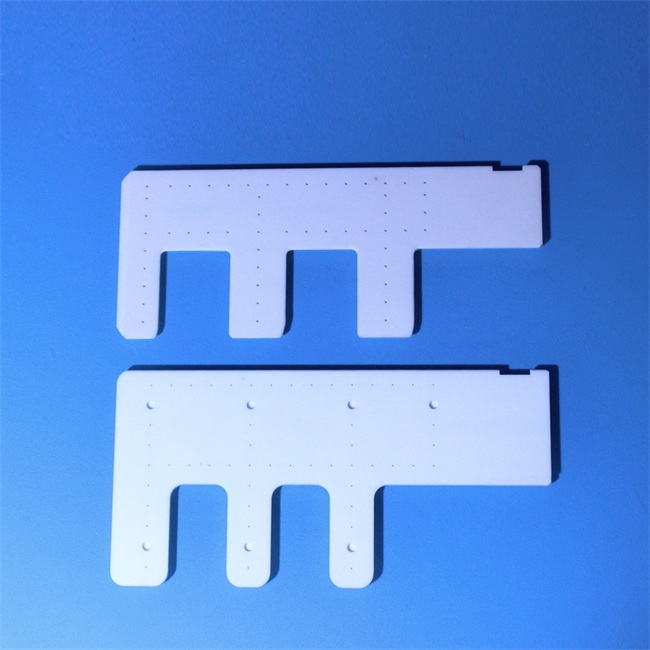
Semiconductor manufacturing: precision handling expert in clean environment
Industry pain points: semiconductor wafer manufacturing requires extremely high environmental cleanliness. Metal arms are prone to metal ion pollution due to friction, resulting in a drop in wafer yield; At the same time, the high temperature plasma etching environment poses a severe challenge to the heat resistance of materials.
Solution:
Anti pollution characteristics: the surface of the alumina ceramic arm is smooth, the hardness reaches Mohs 9, the particles will not fall off when contacting with the wafer, and the chemical inertia is strong, which can avoid the release of metal ions. For example, in the wafer handling process, the surface roughness can be controlled at the micron level to ensure that the wafer will not be scratched after long-term use.
High temperature resistance: it supports stable operation at 1600 ℃ and is suitable for plasma etching, chemical vapor deposition (CVD) and other high-temperature processes. According to the measured data of a semiconductor enterprise, after using the alumina ceramic arm, the equipment failure rate is reduced by 40% and the wafer yield is increased by 15%.
Vacuum compatibility: through air tightness design, it can meet the wafer transmission requirements in vacuum environment and is widely used in core equipment such as lithography machines and ion implanters.
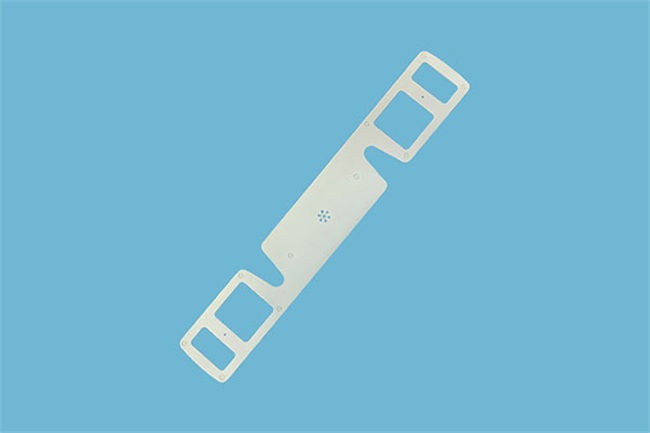
New energy field: long life solutions in corrosive environment
Industry pain points: in the production of lithium batteries, the electrolyte is highly corrosive to metal materials, and the traditional metal arm needs to be replaced frequently, increasing the downtime cost; At the same time, the electrostatic generated by electrolyte volatilization is easy to absorb dust, which affects the safety of the battery.
Solution:
Corrosion resistance: alumina ceramics have excellent resistance to strong acids and bases such as hydrochloric acid and sodium hydroxide. Its service life in electrolyte environment can reach more than 3 times that of metal arm. According to the feedback of a power battery manufacturer, after the ceramic arm was used, the equipment maintenance cycle was extended from once a month to once a quarter.
Anti static design: by coating the surface with Teflon anti-static coating, the friction coefficient is as low as 0.05-0.15, effectively reducing the generation of static electricity. Experiments show that the coating can withstand more than 100000 times of friction without falling off, ensuring no dust adsorption during handling.
High precision positioning: the CNC machine tool is used for finishing, and the repeated positioning accuracy reaches ± 0.005mm, meeting the millimeter level accuracy requirements of lithium battery pole lamination, winding and other processes.
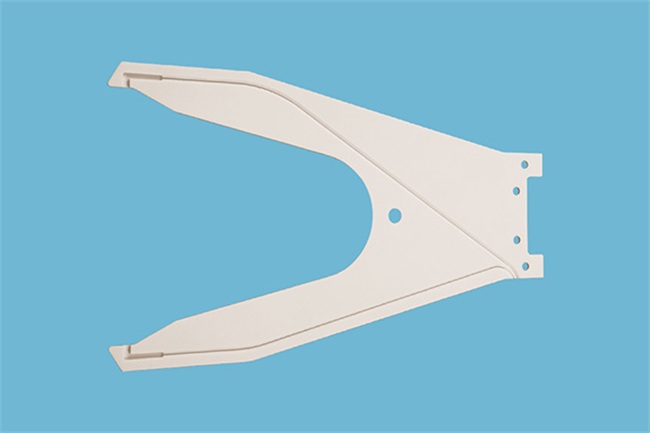
Heavy industry scenario: stable executor under extreme conditions
Industry pain points: extreme environments such as high-temperature molten iron impact in steel plants and strong corrosive gas in glass melting furnaces lead to deformation and failure of metal arms. Traditional heat-resistant steel parts need to be replaced frequently, increasing safety risks and costs.
Solution:
Thermal shock resistance: alumina ceramics have a low coefficient of thermal expansion and can maintain dimensional stability in a wide temperature range of -50 ℃ to 1600 ℃. The actual measurement of an iron and steel enterprise shows that the ceramic arm can work continuously at 1500 ℃ near molten iron for 2000 hours without deformation, while the metal arm can only last for 500 hours.
High strength structure: the bending strength can reach 250Mpa, and the hot pressed products can reach 500MPa, which can withstand the impact of hot metal. For example, in the mold vibration system of the continuous casting machine, the ceramic arm replaces the traditional metal rod, reducing the equipment downtime by 60%.
Lightweight design: the density is only 1/3 of metal, reducing equipment load and improving operation flexibility. In the reclaiming manipulator of glass melting furnace, the ceramic arm reduces the energy consumption of the equipment by 20%.
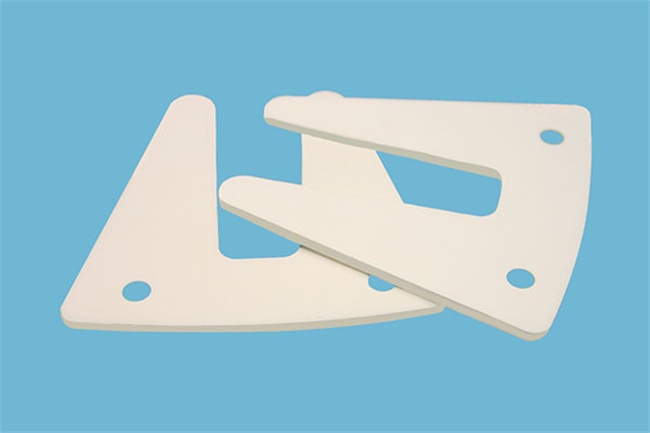
Medical devices: perfect combination of biocompatibility and precision operation
Industry pain points: traditional metal surgical instruments are easy to cause rejection reaction of patients, and surface wear may release metal ions after long-term use; At the same time, minimally invasive surgery challenges the micron precision of instruments.
Solution:
Biocompatibility: alumina ceramics have excellent biocompatibility with human tissues and are not easy to cause inflammatory reaction after implantation. In the field of artificial joints, the wear rate of ceramic head and mortar combination is only 1/200 of that of metal polyethylene combination, and the service life is extended to more than 20 years.
High precision machining: through ultra precision grinding technology, micro pipes with a diameter of 0.1mm can be manufactured to meet the needs of Neurosurgery, ophthalmology and other high-precision operations. For example, after a medical robot enterprise adopted a ceramic arm, the surgical positioning error decreased from 0.1mm to 0.01mm.
Personalized Customization: it supports 3D printing and CNC joint processing, and can customize the arm shape according to the patient’s anatomical structure to improve the surgical comfort and success rate.
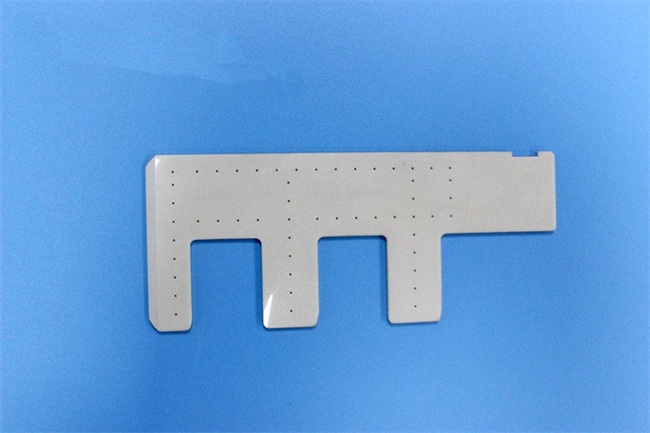
Aerospace: double breakthrough of lightweight and high strength
Industry pain points: Spacecraft manipulator needs to work in extreme temperature and strong radiation environment for a long time. Traditional metal materials are prone to fatigue failure, and the increase of weight affects the payload.
Solution:
Lightweight advantage: the density is 3.9g/cm ³, only 1/2 of titanium alloy, which can significantly reduce the weight of the manipulator. In the Mars probe sampling manipulator, the ceramic arm reduces the overall weight by 30% while keeping the bending strength unchanged.
Radiation resistance: alumina ceramics have excellent resistance to γ – ray and neutron radiation, and are suitable for nuclear power plant maintenance, space station maintenance and other radiation environments. Experiments show that after 10 years of space radiation, the strength of the ceramic arm decreases by only 5%, while that of the metal arm decreases by 30%.
High reliability design: optimize the structure through finite element analysis, reduce stress concentration points, and ensure the stable operation of the manipulator in the temperature range of -100 ℃ to 200 ℃. The in orbit test of a satellite shows that the failure rate of the ceramic arm is 0, while the failure rate of the metal arm is 2% per year.

The wide application of alumina ceramic arm not only solves the performance bottleneck of traditional metal arm in pollution, corrosion, high temperature and other scenarios, but also promotes the development of semiconductor, new energy, medical and other industries in a more efficient, lower cost and safer direction through the characteristics of lightweight, high precision, biocompatibility and so on.
Brudeze Ceramics supplies and sells a wide range of high-quality quartz glass, including alumina ceramics, zirconia ceramics, silicon nitride ceramics, aluminum nitride ceramics, silicon carbide ceramics, boron carbide ceramics, bioceramics, machinable ceramics, etc. We can meet the customization requirements of various ceramic products.
Tags: boron carbide ceramics
PREVIOUS:The difference between ceramic screws and other screws
CATEGORIES
LATEST NEWS
- Zirconia Ceramic Rod Custom...
- High-temperature resistance...
- What is the wear resistance...
- What is the hardness of cer...
- Aluminum oxide ceramic cust...
- What are the main aspects o...
- What are the mechanical pro...
- Thermal properties of zirco...
- What properties should be c...
- What are the mechanical pro...
